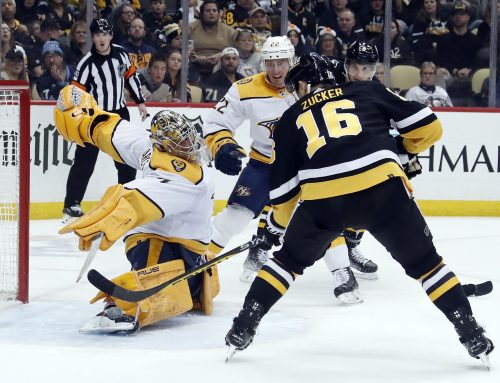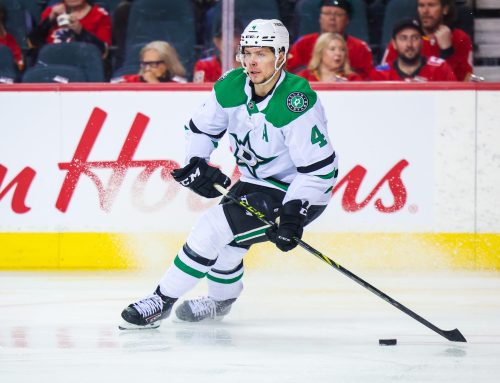
How the low salary cap left quality players on the waiver wire in cap leagues.
The first full season of the new NHL collective bargaining agreement (CBA) has been an unusual one for all fantasy hockey managers. Some of the rule changes have accelerated player movement as teams adjust to the new landscape. This season we have seen examples of retention of salary facilitating some trades that would not have happened under the old CBA. This includes the unexpected trade of Roberto Luongo to the Florida Panthers. The fantasy implications were massive as Tim Thomas was immediately out as number-one goaltender in Florida while the young Eddie Lack became the new man in Vancouver.
In salary cap leagues the impact of the new rules has been even more significant. With fewer cap dollars available and no rollback on existing deals some players were forced to take pay cuts. This had the effect of creating cap bargains that can provide excellent value to your fantasy squad. In turn, this development also made some of the older inflated contracts a tougher pill to swallow.
However, the effect of the new CBA extends far beyond just the individual value of players. The lowered salary cap ceiling no doubt has an effect on your league’s waiver wire. With payrolls being more difficult to maintain the end result is an increase of highly-paid players, mostly older vets, without a team in your league. This will not include star players of young guys with upside, but rather depth scorers with a hefty cost that under better circumstances would find a home somewhere in your league.
In order to better illustrate this situation, I will use an example from the United Hockey League which is mostly composed of Dobberhockey forum members and staff. Here are the league settings:
United Hockey League (dynasty)
Scoring setup: Head-to-Head
Teams: 24
Pro Rosters: 23 + 4 IR (3LW, 3C, 3RW, 3F, 6D, 1G, 4BN)
Farm Rosters: 27 (max 160 GP for farm eligibility) + one-year protection for newly-drafted prospects
Categories: G, A, +/-, PIM, SOG, GWG, PPP, SHP, Hit, Blk, FOW, W, GAA, SV, SV%, SO
Salary Cap Ceiling: same as NHL
In this league here are the top 20 free agents available based on league-specific production this season:
|
Player |
Position |
Score |
Cap Hit |
|
Elias, Patrik – NJ |
C,LW,F |
839 |
5,500,000 |
|
Umberger, R.J. – CBJ |
LW,F |
767 |
4,600,000 |
|
Wisniewski, James – CBJ |
D |
760 |
5,500,000 |
|
Timonen, Kimmo – PHI |
D |
759 |
6,000,000 |
|
Vlasic, Marc-Edouard – SJ |
D |
745 |
4,250,000 |
|
Campbell, Brian – FLA |
D |
710 |
7,142,875 |
|
Jackman, Barret – STL |
D |
666 |
3,166,667 |
|
Coburn, Braydon – PHI |
D |
664 |
4,500,000 |
|
Regehr, Robyn – LA |
D |
621 |
3,000,000 |
|
Zubrus, Dainius – NJ |
C,RW,F |
620 |
3,100,000 |
|
Tyutin, Fedor – CBJ |
D |
620 |
4,500,000 |
|
Boyle, Dan – SJ |
D |
617 |
6,666,667 |
|
Korpikoski, Lauri – PHO |
LW,F |
614 |
2,500,000 |
|
Cole, Erik – DAL |
RW,F |
608 |
4,500,000 |
|
Alzner, Karl – WAS |
D |
604 |
2,800,000 |
|
Ference, Andrew – EDM |
D
📢 advertisement:
|
588 |
3,250,000 |
|
Quincey, Kyle – DET |
D |
584 |
3,775,000 |
|
Laich, Brooks – WAS |
C,F |
577 |
4,500,000 |
|
Stuart, Brad – SJ |
D |
575 |
3,600,000 |
|
Oduya, Johnny – CHI |
D |
574 |
3,383,333 |
Note: Elias’ score ranks 97th in the league while Oduya is 332nd. There is a total of 552 pro roster positions on the league’s 24 teams.
Domino effect
When a team drops a player for financial reasons, obviously the goal is to replace him with a cheaper alternative. When many similar decisions are made this can quickly chip away at the pool of inexpensive journeymen that can be scooped up temporarily to help cover for injuries. In the past I have been able to use the likes of Joey Crabb and Tyson Strachan with good results for this league considering they would sit in my last roster spot for a week or two. This year the mass abandonment of vet players made it nearly impossible to find these players unless you were at the computer when news came out that someone potentially valuable has been called up.
With a lack of good cheap talent available on the wire that can provide immediate help, it was up to the owner to find solutions from within or go the trade route. Those that already possessed NHL-ready talent on their farm rosters had a great advantage in roster flexibility. Using my team from the UHL as an example, here is a list of players that spent the majority of the season on my farm roster but produced good numbers when called upon:
|
Player |
Position |
Score |
Cap Hit |
How acquired |
|
DeKeyser, Danny (R) – DET |
D |
557 |
1,350,000 |
Prospect draft 2013 |
|
Raffl, Michael (R) – PHI |
LW,F |
549 |
925,000 |
Prospect draft 2013 |
|
Brown, J.T. (R) – TB |
RW,F |
422 |
874,125 |
Prospect draft 2012 |
|
Holland, Peter (R) – TOR |
C,F |
419 |
1,295,000 |
Prospect draft 2011 |
|
Bourque, Gabriel – NAS |
LW,F |
415 |
775,000 |
Free agent 2012 |
|
Hayes, Jimmy – FLA |
RW,F |
411 |
875,000 |
Trade 2013 |
|
Petrovic, Alex (R) – FLA |
D |
209 |
870,000 |
Trade 2013 |
The big picture
Having all of these prospects in-house helped reduce the need to find cheap waiver-wire talent when there were no options available. It helps put in perspective the real importance of finding quality players to occupy your farm positions. Not only are you looking for future studs but also immediate help while they get their feet wet in the NHL.
The overall effect of teams abandoning their more expensive vets is most obvious in a year like this one with a lowered cap ceiling. However, history can repeat itself if one or more of your players hit the jackpot during summer free agency. You will often be faced with tough decisions to balance your budget.
Most of the time the declining vets are shown the door in favor of the younger and/or more productive players. Replacing your departing players is not an easy task. You will not always find the ideal replacement on the wire especially if your league is filled with savvy managers. If you do your homework ahead of time you might already have your replacement in-house.
Previously in Capped:





 FLA
FLA CHI
CHI NYR
NYR PIT
PIT L.A
L.A COL
COL MTL
MTL CAR
CAR CBJ
CBJ NSH
NSH PHI
PHI UTA
UTA
